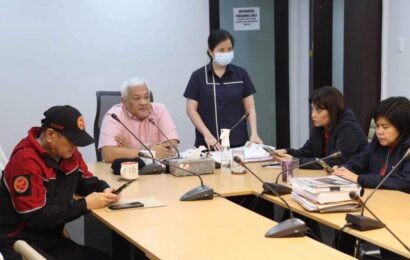
CITY OF SAN FERNANDO, Pampanga – A significant decrease in the number of dengue cases in Central Luzon was reported by the Department of Health (DOH) Central Luzon Center for Health Development.
Based on the Dengue Surveillance Update from the Regional Epidemiology and Surveillance Unit (RESU), from 25,644 cases reported from January 1 to August 5, 2022, the number went down to 9,607 in the same period this year.
Of the seven provinces in Central Luzon, Bulacan posted the most cases during the period with 2,567; followed by Nueva Ecija with 2,075; Pampanga – 2,008; Tarlac – 1,923; Bataan—456; Zambales – 316; and Aurora – 262.
DOH Entomologist III Jeffrey De Guzman said all provinces in the region showed a decrease in dengue cases compared last year.

“In terms of fatalities, the number also significantly went down from 60 deaths last year to only 28 deaths this 2023. This is equivalent to about 47% decrease,” he said.
De Guzman said among the factors that contributed to the downward trend is the current El Niño phenomenon, as well as the epidemic experienced in the region last year.
“In 2022, we experienced a peak in dengue cases in Central Luzon, as we reached epidemic levels. Historically, the year succeeding that, we usually record a decrease in cases because the public has somehow developed partial immunity to the disease. Another factor is because of the El Niño this year, we are experiencing less rains,” he explained.
While the number of cases and deaths decreased, DOH constantly reminds the public to continue working towards the total eradication of the disease in the region by maintaining their respective communities clean and free of mosquitoes.
The health department continues to advocate the 5S strategy including search and destroy potential mosquito-breeding sites; self-protection; seeking early consultation; staying hydrated; and supporting fogging activities only when there is an impending outbreak.
“The key to prevention and control is early diagnosis for supportive management and timely referral to health facilities. Our dengue NS1 rapid diagnostic test is available at the rural health units free of charge. We do not also advise the public to self-medicate, especially if they have other symptoms,” De Guzman added.
He also stressed that dengue prevention and control is everyone’s concern, as he urged the public to participate in the anti-dengue campaigns conducted by their respective local government units.
Dengue is a disease caused by the bite of an Aedes aegypti mosquito.
These mosquitoes bite during the daytime. Headache, fever, muscle and joint pains, and skin rashes characterize the disease.
In extreme cases, bleeding of the gums and nose may occur; as well as death.





